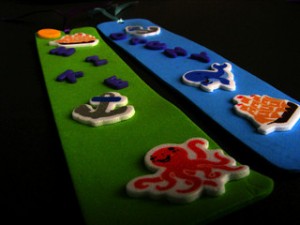Abstract
Content on Internet’s world-wide web continues to grow at a dizzying pace. While a wealth of engaging content for learning is now available online, locating and later RE-locating websites for instructional uses is frequently challenging. As teachers, we’ve all likely had an experience similar to this one: “I know I saw a great website about that topic just last week. How frustrating I cannot find the web address again so I can share this with my students!” Social bookmarking offers a free and compelling way to address the need we all have to locate, record, later RE-locate, and share “good website finds” on the Internet. Regardless of future changes in the Internet and the content it contains, this ability to ably manage website “bookmarks” or “favorites” is likely to be an enduring skill important to both teachers and students alike.

Social Versus Local Computer Website Bookmarking
The English WikiPedia defines “social bookmarking” as “a way for internet users to store, classify, share and search Internet bookmarks. (http://en.wikipedia.org/wiki/Social_bookmarking) When most people begin surfing the web, one of the first things they generally learn to do is save a website address as a “bookmark” or “favorite.” These words are used interchangably: “favorite” is the term used by the Internet Explorer and Flock web browsers, “bookmark” is used by the FireFox and Safari web browsers. (See www.flock.com, www.mozilla.com/firefox, and www.apple.com/safari for more information about and download links.) In the case of all four of these web browsers, however, there are inherent limitations to the common practice of saving a website address as a favorite or bookmark on a local computer’s hard drive. These include:
In contrast to these limited features for traditional website bookmarking, many systems for social bookmarking offers distinct advantages.
Get Started With Del.Icio.Us
A variety of different social bookmarking tools are available, but del.icio.us (http://del.icio.us) is one of the most powerful and versitle because of the way it facilitates sharing and collaboration with others.1
Several excellent step-by-step guides for getting starting with del.icio.us are available. These include:
After registering for a free account and installing “bookmarklets” (browser buttons which facilitate the process of quickly posting or saving a new website into your del.icio.us bookmarks) be sure to check out the ADD TO MY NETWORK feature. This permits you to add other people (for free, of course) into your personal del.icio.us network so you can see, access, and (if desired) save the Internet websites they have saved themselves. Think of this as analogous to “The Borg” in the Star Trek series, but in a good way! The Borg were a formidible opponent because they were mentally connected to each other, and almost immediately were able to learn things their fellow Borg members knew. Del.icio.us offers a similar potential for shared knowledge on the network of the Internet!
After you create your own del.icio.us account and start to use it, visit my del.icio.us page (http://del.icio.us/wfryer) and click the text link at the top to ADD WFRYER TO MY NETWORK. As you find websites others have also saved, click the link SAVED BY 300 OTHER PEOPLE (or whatever the correct numbers is for that website) and look for other people with similar interests to yours who you can also add to your own del.icio.us network. This will permit you quickly access the “best Internet website finds” of other people easily and quickly in del.icio.us in the future, by simply clicking the MY NETWORK link at the top of the page.
The way del.icio.us supports “tagging” of websites to organize them into an organically created “folksonomy” is a fundamental organizing principle of the user-created web. To learn more via a powerful video on this subject, I highly recommend the video “The Web is Using/Us” by Dr. Michael Wesch. (http://mediatedcultures.net/ksudigg/?p=84) The changes in the information landscape all around us can be overwhelming. One of the best ways to better understand and leverage the opportunities this new landscape presents for learning is by regularly using web 2.0 tools like del.icio.us. I encourage you to give it a try. If you start to use del.icio.us regularly, you may never find yourself saying again, “I wish I could find that great website again I saw last week!” You’ll also be amazed by the number of connections you can make to other educators interested in similar curricular subject areas who have already found terrific instructional websites perfect for you and your students to start using right away!2
Image Citation and Article History
Featured image licensed CC-BY. Mol, D. (2010, September 18). Bookmarks. Welcome to Flickr – Photo Sharing. Retrieved May 26, 2012, from http://www.flickr.com/photos/fireflythegreat/5002232067/
References
- For an updated list of social bookmarking sites, see the English WikiPedia article, "List of social bookmarking websites" http://en.wikipedia.org/wiki/List_of_social_bookmarking_websites
Reference Link - This article was originally posted online on http://www.wtvi.com/teks/07_08_articles/socialbookmarking101.html
Reference Link

Leave a Comment
You must be logged in to post a comment.